Alright so time to take a look at the latest version of the noPhoto! 🙂

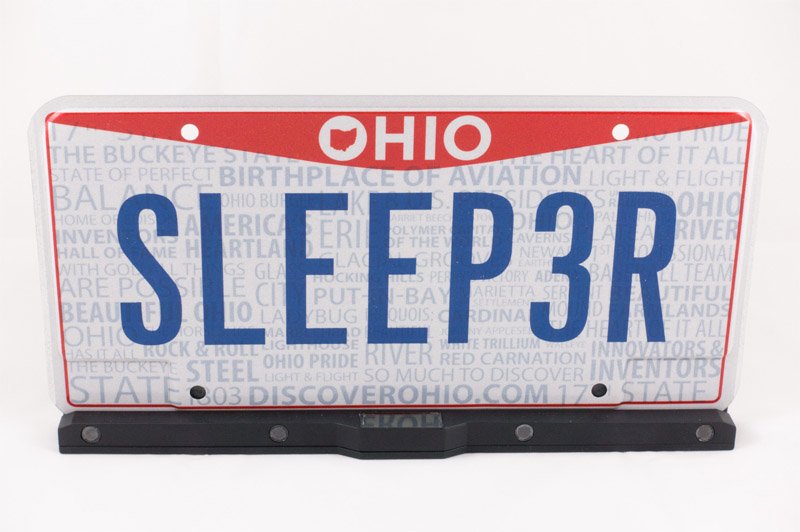
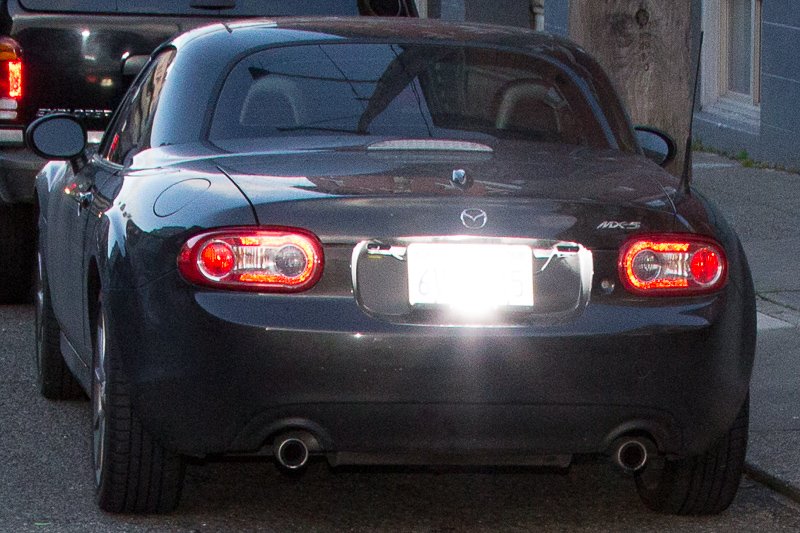
noPhoto Overview
The noPhoto is a device that attaches to your license plate and helps you avoid tickets from redlight cameras and speed cameras. It looks for the flash that comes from the camera wanting to give you a ticket. When the noPhoto detects that flash, it fires a flash of its own, overexposing the license plate in the image so that the camera can’t read the plate and so you don’t get a ticket in the mail. The noPhoto retails for $399.
I’ve had a chance to test the previous version of the noPhoto. That was a great unit except for the one tiny fact that it didn’t actually protect me from a RLC ticket… https://www.rdforum.org/showthread.php?t=30590 It turns out there was a timing issue with the ATS cameras in use where I live. Jon at noLimits did a great job troubleshooting the issue and it has since been resolved with the new version of the noPhoto. I retested this new version against the same camera and this time it passed with flying colors.
In addition to being more effective, this new version is improved in just about every way. Let’s take a look.
Let’s start with a hands-on video you can watch to get familiar with the noPhoto itself.
and here’s a quick video of how it works.
Here’s how it looks mounted on my vehicle:
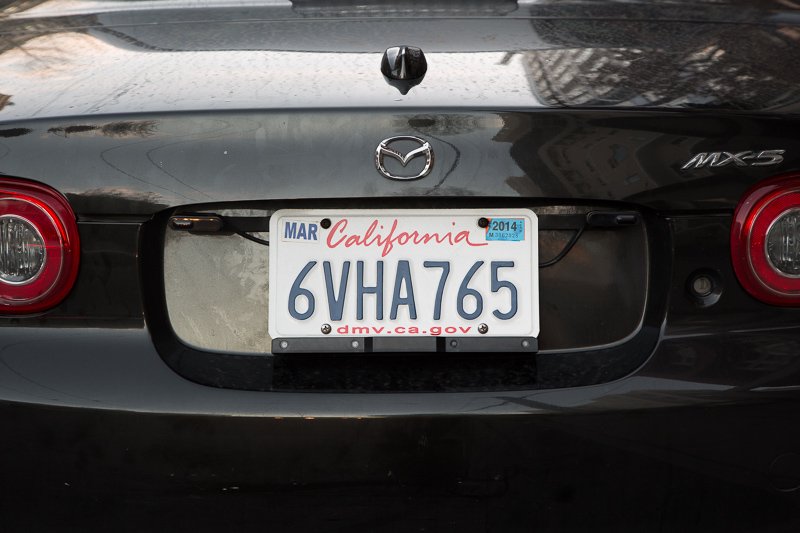
I had a chance to test it with an RLC/speedcam and it does indeed work in practice.
The previous gen noPhoto was a big license plate frame that your plate slides into. This is a black bar, essentially, that attaches to the top or bottom of your license plate.
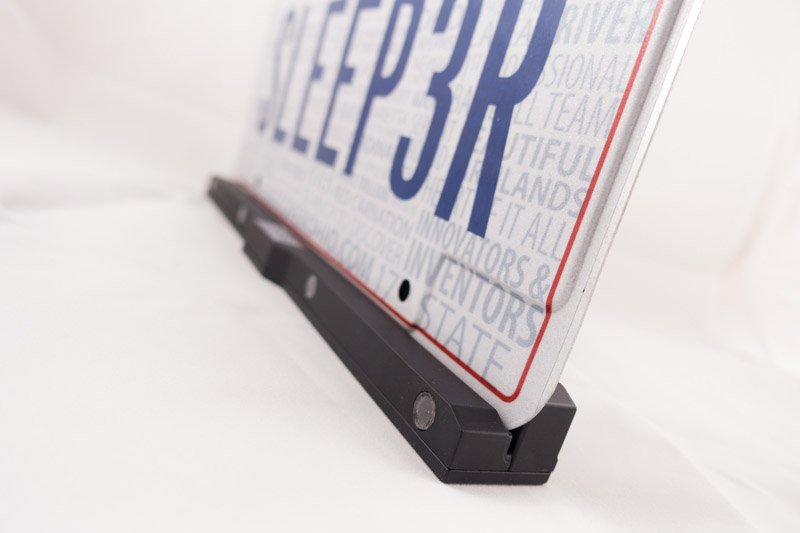
The noPhoto has 4 circular light sensors to detect the camera flash and the noPhoto’s flash is right in the center of the plate.

RLC’s often shoot two photos: one as you’re entering the intersection and once as you’re leaving it so this is designed to fire for both shots before needing to recharge. You’ll see the two shots in the RLC test video I posted above.
The previous gen noPhoto had two flashes, one on either side. I like this center mounted flash design better because it does a better job of obscuring the whole plate, especially if your plate only has a few characters in the middle.
Here’s everything that’s included with the noPhoto:
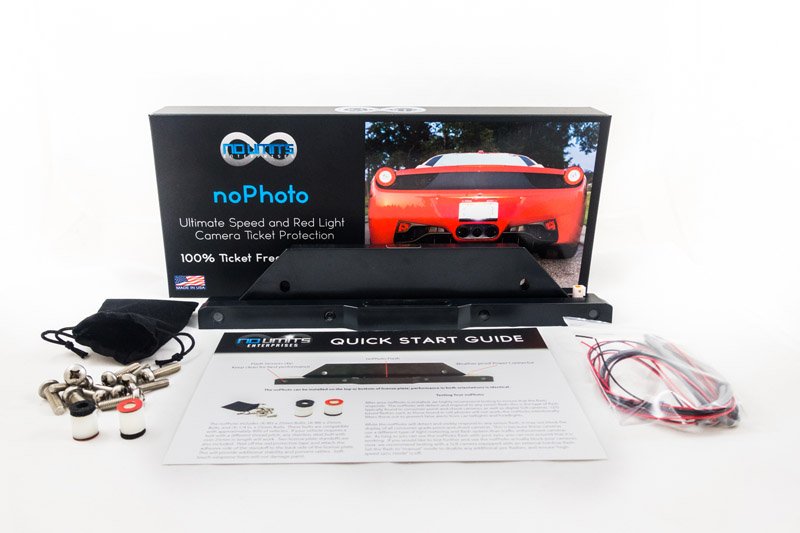
In the box you get the noPhoto, a power cable, some mounting hardware, and a quick start guide. Pretty simple.
Now before I get deeper into the testing and reviews, I want to address what was my biggest concern with the original noPhoto, aside from its effectiveness. It’s what prevented me from wanting to run the noPhoto even if it did work in practice. It’s the same issue I saw with the ProDB I tested, a competing model. The issue is limited false filtering abilities.
See, both the first gen noPhoto and ProDB would false alert to lidar guns, meaning that if a police officer is targeting you with lidar, it’ll cause the noPhoto to go off and he’ll see a bright flash which is kinda weird. Given that I’m not the type of guy who runs red lights (I’m super cautious with those) and there’s no speedcameras here for me to worry about in the first place, effective filtering was my biggest concern day to day. I don’t want this thing to flash at a police officer who’s staring right at my plate while targeting me with lidar! That’s attention I definitely don’t want. I also don’t want it flashing other drivers when I’m out on the road either, especially at night when it’s more obvious. The previous units I tested would false to not only lidar guns, but also some HID headlights, construction lights, and sunlight filtering through trees, among other things. The filtering in this new version has been significantly improved and it doesn’t false to the PL3 I tested against or any of the other of the other lidar guns I simulated with my LI and AL pocket testers.
I sent my original noPhoto back long ago so they could take a look at it and my ProDB has been sitting in my closet ever since due to the falsing issues. It’s that big of a deal for me.
The newest noPhoto, I’m happy to say, not only works against RLC’s/speedcams, but it also doesn’t false to lidar guns. To me that’s a minimum requirement in order to be acceptable and this is the only license plate protector out there that meets this criteria. It’s now the best such device on the market. Because it’s something that meets my minimum criteria, let’s take a deeper look at the noPhoto. We’ll start with some test photos so you can see it in action.
Test Photos
It took a fair amount of trial and error with my DSLR and flash and talking to Jon at noLimits to simulate what an RLC would see and get it to match what Jon was seeing from his testing against actual redlight cameras and speedcameras. Just because you take a picture of your license plate with a flash does NOT mean that that’s the same way that an RLC/speedcam would expose the image. For you fellow photographers, please take a look at the discussion and testing in the noPhoto announcement thread to get familiar with the details. (You generally wanna shoot ISO 1600-3200, f5.6-f8, 1/500-1/1000 and you may need to shoot past your camera’s flash sync speed without resorting to high speed sync. You also want the car to be pretty small in the frame.)
Night Test:
Let’s take a look at how the noPhoto performs at night.Camera flash firing, noPhoto not firing:
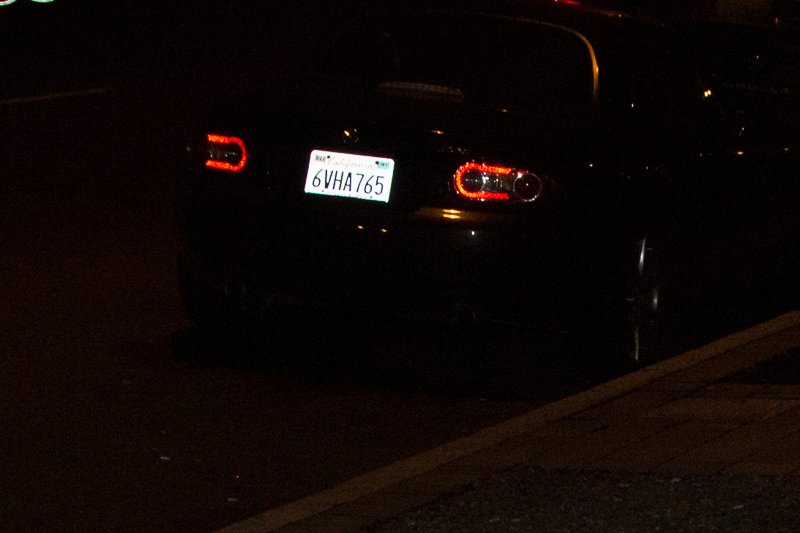
Camera flash firing, noPhoto firing:
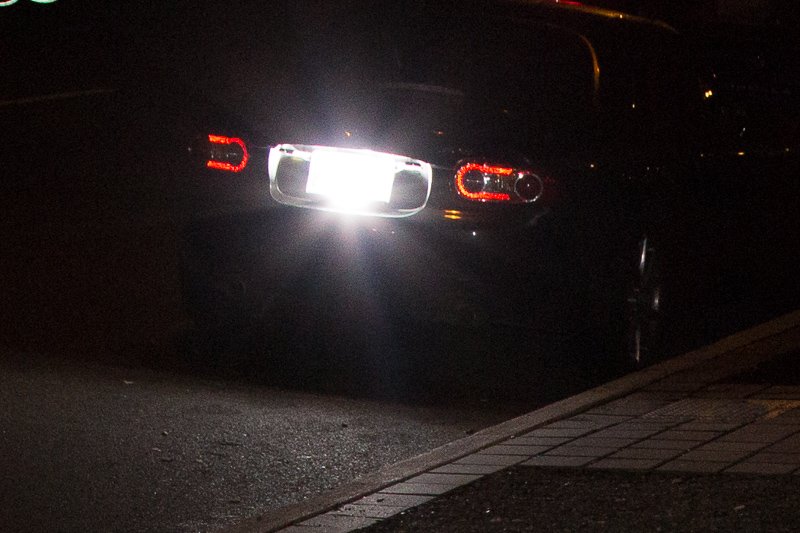
For these shots, the car is actually pretty small in the frame which is how RLC’s are set up. Those photos above are cropped. Here’s the whole frame.
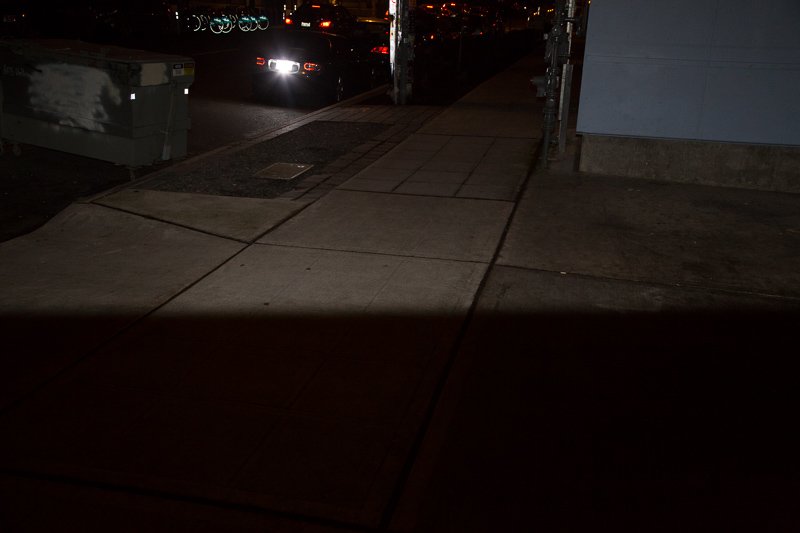
(ISO3200, f/5.6, 1/500th)
Ignore that black portion at the bottom of the image. That’s due to me having to shoot faster than my 5D3’s flash sync speed.
Daytime Test, Shade:
Next let’s take a look at how things look in the daytime when there’s more light out. Here’s a daytime shot in the shade.
Ambient light only, no flashes at all:
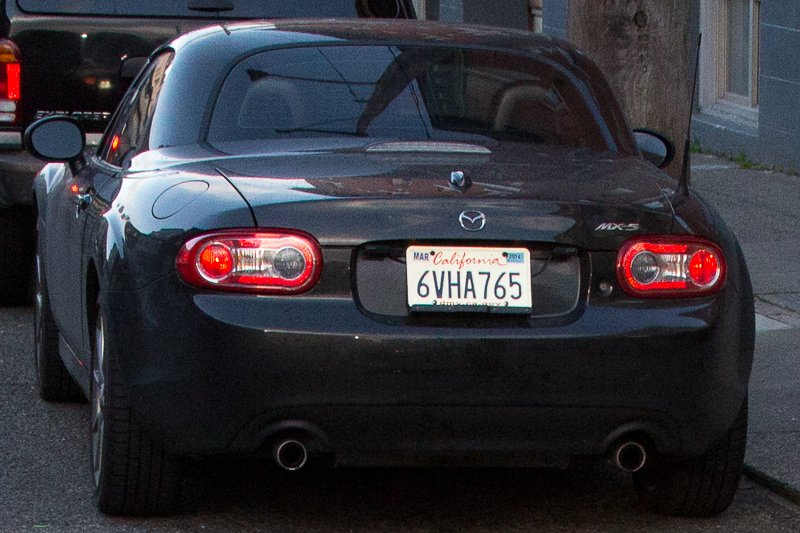
Camera flash firing, noPhoto not firing:
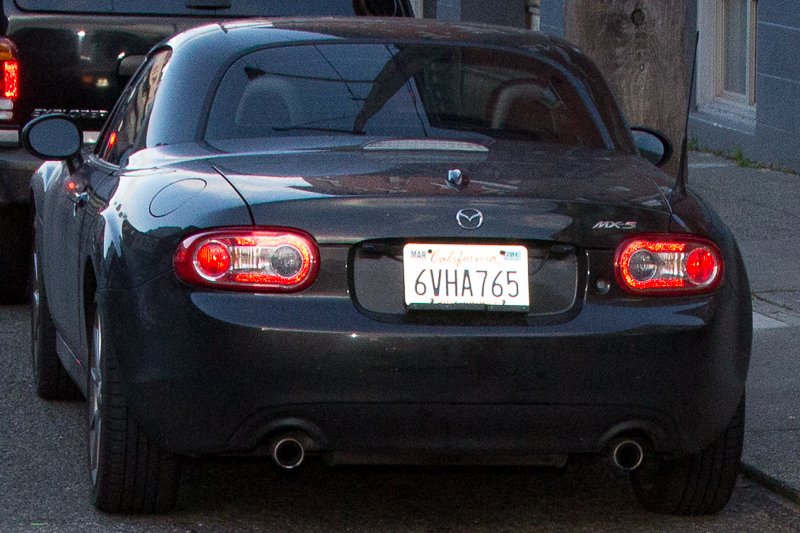
Camera flash firing, noPhoto firing:
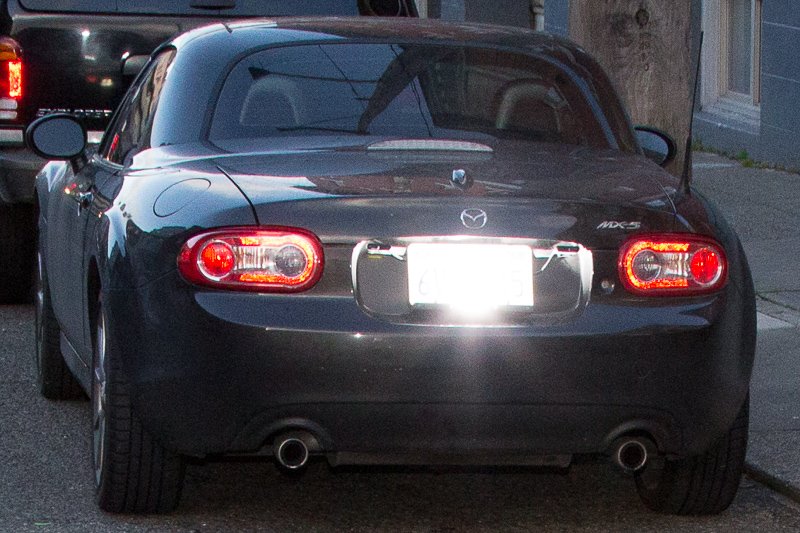
and here’s the full frame image uncropped:
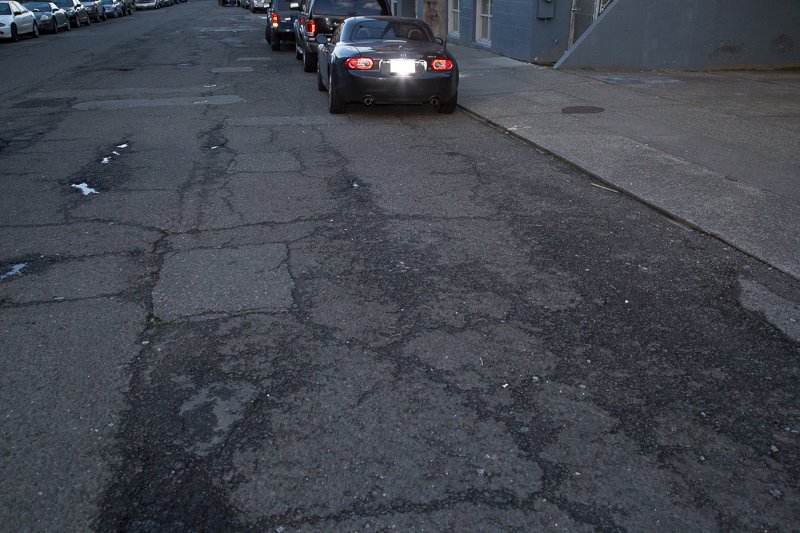
(ISO 3200, f/8, 1/1000)
Even in the daytime it is effective. You can slightly see the far outside edges of the license plate, but it easily blocks out the majority of the plate to prevent any sort of character recognition software from being able to read your plate.
In real life I think the car would actually be even smaller in the frame which would make the noPhoto block even more of the license plate than in my sample images.
Daytime Test, Direct Sunlight:
This is probably the toughest situation. The sun is bright and so the noPhoto has to overpower the sun for the fraction of a second that the camera is exposing. Let’s take a look at how it works in the daytime.
Ambient light only, no flashes firing:
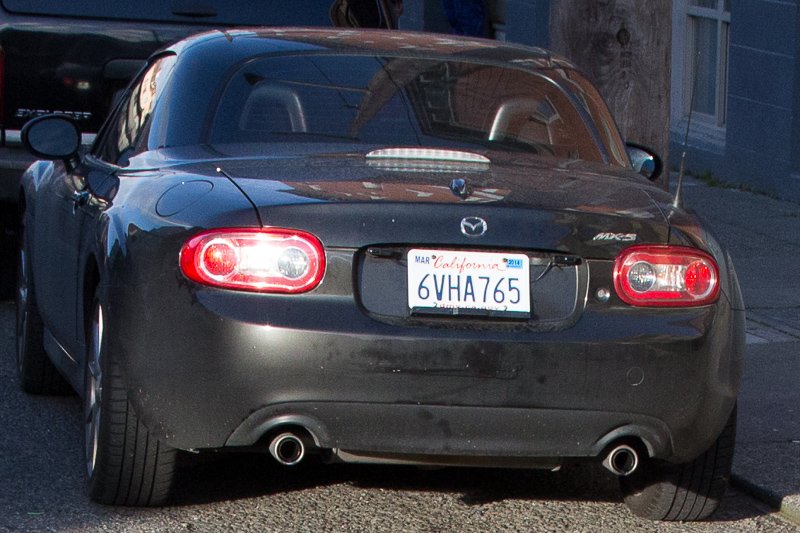
Camera flash firing, no noPhoto firing:
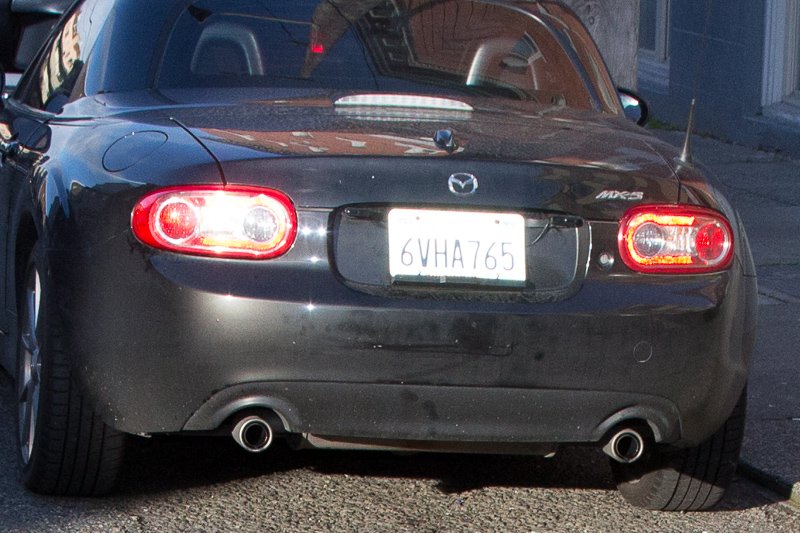
Camera flash firing, noPhoto firing:
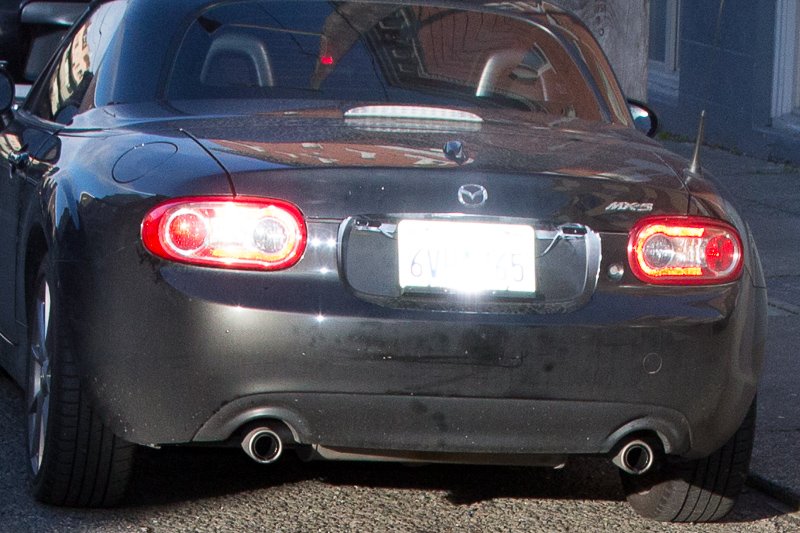
and again here’s the full image uncropped:
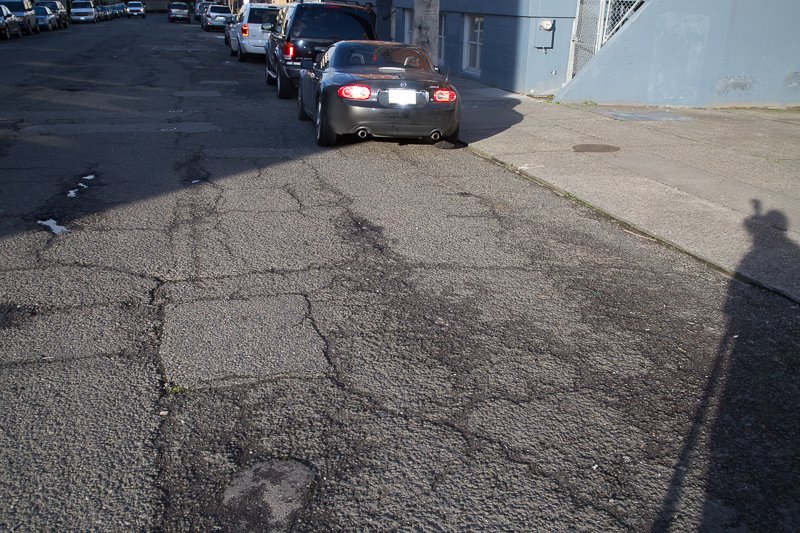
(ISO 1600, f/8, 1/1000)
I dropped down from ISO 3200 to ISO 1600, cutting the sensitivity of the camera in half and making it even harder for the noPhoto. I probably should have gone down even farther, but you can see that even in the toughest situation against the bright sun, it is still effective.
Mounting
As far as the install is concerned, there’s two main parts. First is physically mounting the noPhoto. Second is the wiring. Let’s cover physically mounting first.
The noPhoto is designed to sit on top or on the bottom of the license plate.
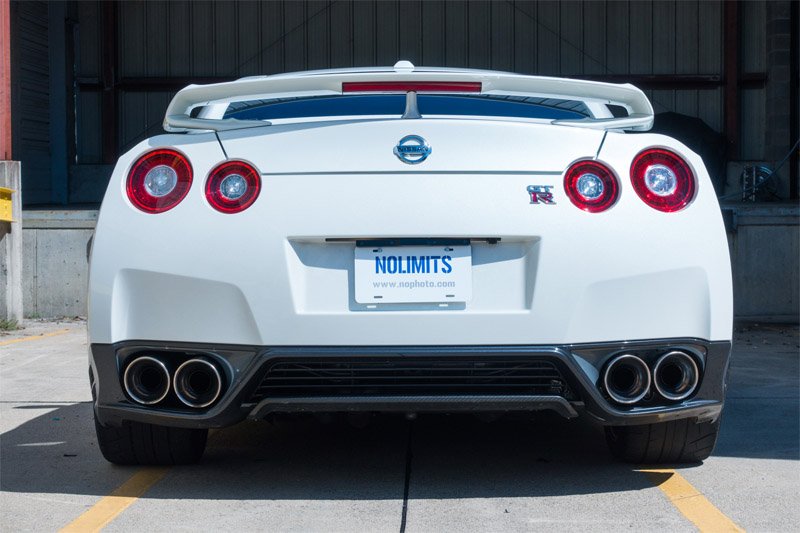
Originally I wanted it to sit on top of my license plate for a more solid mount like in the photo above. (My car only has screw holes for the top of the license plate.) The noPhoto comes with a bunch of screws and nuts.
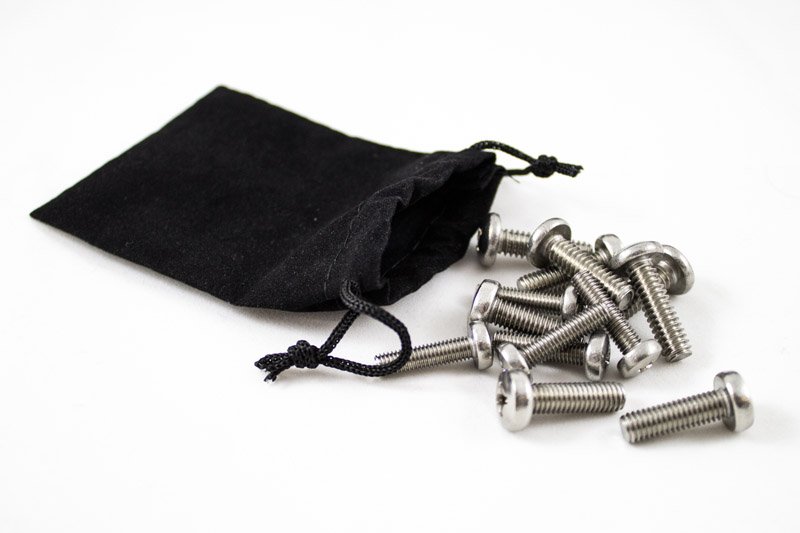
The screws go in from the front, through the license plate and noPhoto, and into your car. If you look closely at my car you’ll see a custom bracket holding my rear ALP’s that’s also using those license plate screw holes. Because I had to put that in as well, it made the whole thing too thick for the included screws so I went to the hardware store to get longer screws and that did the trick.
However, once I got it installed, I realized that the noPhoto physically blocked my hand from being able to hit the trunk release switch just up underneath the trunk lip. My trunk lip wasn’t physically blocking the noPhoto’s light sensors so it would still function there just fine, but it got in the way of me using my car. Note: On my last car I had a backup camera and I noticed that these license plate blockers actually blocked part of the view in my backup camera so keep that in mind if your car has a backup camera.
It’s for this reason that I mounted it on the bottom.

There’s no screw holes in my car for the bottom of the plate so I used the included nuts to grab onto the screws from behind. It also means that the bottom of the plate just hangs down. With the noPhoto attached underneath, the bottom of the plate gets heavier. When I hit a bump, the noPhoto can bang against my car which I don’t like. Fortunately noLimits has thought of that. The included some special plastic spacers (to fill the gap between your car and the noPhoto so it doesn’t flap into your car) as well as some padding to attach behind so that even if it does slap your car, it doesn’t damage anything.
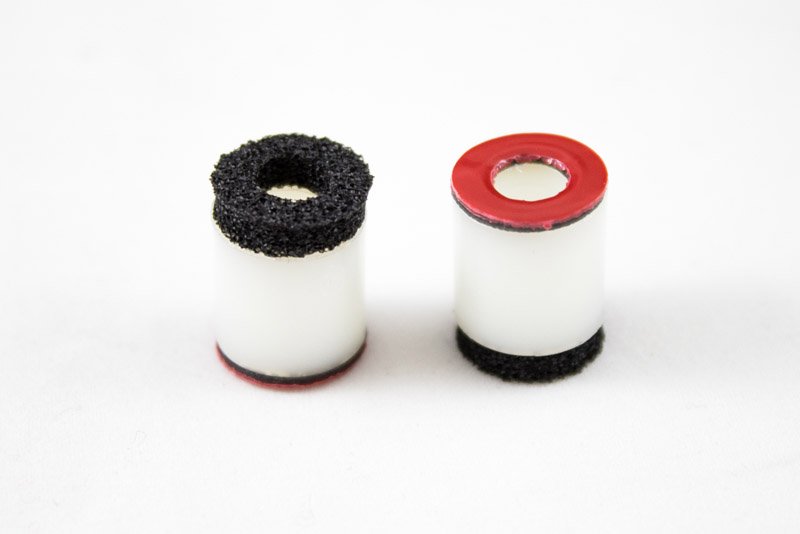
I found the included padding to be pretty tiny so I added a little more of my own and now it’s better. The installation is all set.
Wiring
Wiring up the noPhoto is relative straightforward. There’s one weathersealed power plug under the noPhoto for the power cable to plug into. The other end of that cable needs to attach somewhere in your car.
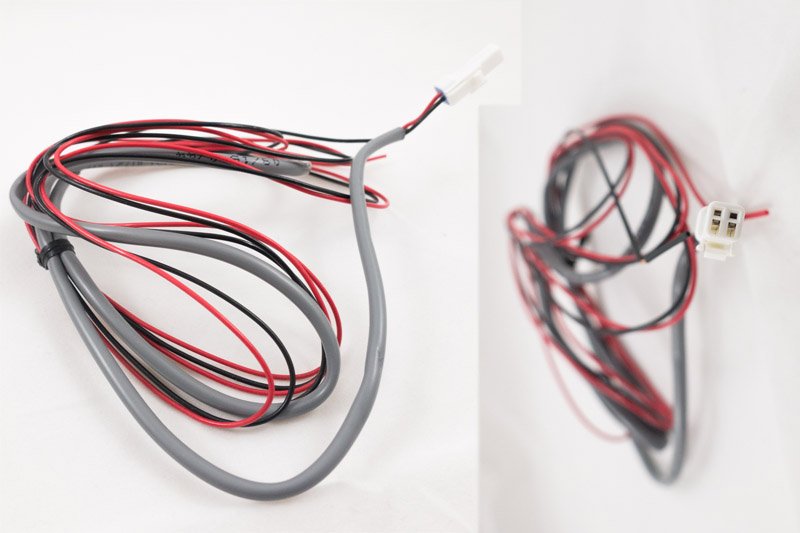
The part of the cable that will be exposed to the elements behind your license plate is protected with gray insulation. The part that will be inside your car is more exposed to make it easier to tap into.
I wound up tapping into my rear tail lights which I think is the ideal location. When I get in my car I always turn on my lights and when I do that, it also powers up my noPhoto. If I ever want to disable my noPhoto, I can do so by turning off my lights.
You can also tap your license plate lights, assuming they’re always on or do the same on/off thing with your taillights. Don’t use your brake lights because your noPhoto won’t always be powered if you do that. It took some Googling and probing with my multimeter to find the right wires to tap into in my car.
One thing that I really liked is that noLimits included the power wire without any sort of connector to tap into your car. The noPhoto end has a plastic connector that clips into place, but the other end is bare wire with removable insulation. Having a super tiny wire makes it really easy to run the wires through tiny crevices in your car. I used some spare T-taps I had lying around to tap into the power and ground wires I wanted to use.
noLimits actually doesn’t include T-taps or anything to splice into existing power wires. Apparently they used to but most installers were soldering the wires themselves and didn’t use them in the first place so noLimits has stopped including them now. You’ll need the tools on hand for crimping, stripping wires, splicing or solder wires, or whatever method you use for powering the noPhoto. You can also have a professional take care of this part for you. Most any stereo installer place can handle this task.
If you like, you can see my install photos here.
False Filtering
So I talked about this a little bit at the beginning in terms of filtering out lidar guns. This noPhoto filters out my PL3 as well as all the guns I’ve simulated with my lidar testers. This is really important. I wouldn’t want to run this otherwise. Here’s a demo noLimits put together showing the noPhoto recognizing but filtering out lidar gun pulses while triggering to a camera flash.
The false filtering on this unit is far more sophisticated than the previous gen noPhoto or ProDB. I tested a cheap chinese knock-off from eBay and the thing would trigger to anything.. even my little keychain LED. Just turning it on (not even flashing on/off quickly) was enough to trigger it. That thing lacked any safety systems too so it would be really bad in case of an accident. This one is fused and has safety systems built in which is really important.
It’s designed to recognize camera flashes and filter out other sources of light including halogen headlights, LED lights, xenon headlights you’d encounter on the road (it will not false if someone has xenon headlights on behind you, or even if they sweep on to the noPhoto), police lidar guns, sunlight, or shadows.
The only thing that I’ve seen it false to at this point is a flashing warning light on the side of a buildings that flashes to get your attention when a garage is opening or closing and a vehicle may be coming. Those things are essentially pulsing camera flashes so those do make the noPhoto go off.
With this version of the noPhoto I don’t actually have a way of getting notified when it goes off so driving around with it, I don’t get an indication of when it falses which makes it tougher to test. The previous devices I tested did have some sort of LED or audio warning that would go off when it went off. That was great for knowing if it triggered when passing a speedcam or when it randomly falsed to something on the road. Because of the lack of firing indication I’m not able to test this thoroughly, but from what I have seen so far, this does look to be greatly improved.
I know the filtering has been discussed here in detail and I’ll go dig up the relevant threads in a bit. 🙂
Controlling the noPhoto
So there’s really no controlling the noPhoto. Once it receives power, it starts charging up and it’s and ready to go in just under 20 seconds. It’s basically a set-it-and-forget-it design. There’s no controls for it.
The positive is that it makes installation simpler. No wires to run into the cabin, no control modules, LED’s, or speakers to install in your car. You just let it sit back there and do its thing covering your rear.
The downside is that you don’t know if it fired if you happen to encounter a speedcam and you also don’t know when it falses like I mentioned. Additionally, your abilities to turn it off are limited.
I have mine wired into my tail lights and if I turn off my lights, the noPhoto will lose power too. (The microcontroller will turn it off so it won’t fire even if the internal capacitors are still full.)
There are times when you’ll want to manually deactivate it. For example, when I cross the border to Canada, they take pictures of your car, front and rear. I want them to be able to get a photo of my plate then and not arouse any suspicion. In that situation I can disable the noPhoto by turning off my lights. That’s helpful during the day but not at night. Something to keep in mind.
Additionally, you don’t want to use it for toll booths. That’s not what these are designed for, it won’t be that effective given all the other flashes from other cars going around, and many toll cameras work differently anyways. Even if it does work, again you’d be raising some serious negative attention by abusing a device like this. Additionally, since the noPhoto retails for $399, you’d have to run a LOT of tolls to get your money back and by that point, you’d start causing some serious problems and start drawing unwanted attention to yourself. In the same way that you should JTK with a jammer to not arouse suspicion, I see the noPhoto as something that shouldn’t be used regularly with toll booths for the same reason. I see this as a device that’s there to protect you on the off-chance you encounter a speedcamera, something that is generally pretty rare and can have some hefty ticket costs to generate revenue while masquerading as being there for safety, you know?
Anyways, as far as controlling the unit is concerned, I would really like a way to manually turn it off without resorting to turning off my lights, that way I could do so at night. That’s the main improvement I would want. It would require the user to remember to manually turn it off and not forget, but I’d like the ability.
Is It Worth it?
I guess this is the big question then, isn’t it? Is it worth it?
The noPhoto retails for $399. Here in Seattle the cost of a redlight camera ticket is $136 with no points so it would take 3 tickets for the noPhoto to pay for itself. In California a redlight camera ticket is $490 and 1 point on your license so even one ticket would pay for itself. If I drive down to Oregon, apparently the cost of a ticket is $260-$1000. Holy cow… Click here to see how things look for your state.
Now again I’m not a guy who runs redlights. In fact I think that’s a terrible idea to do. If speedcameras are in your area with artificially low speed limits to generate revenue, that’s a different story and what I feel these are best suited for. Either way, you can always run Waze which is free and that’s a good option as well for fixed RLC’s/speedcams. I see this as another layer of protection. Depending on what’s in use in your area and the cost of ticket prices in your area, it may indeed be worth it.
Compared to the Competition
The only real competition to the noPhoto is the ProDB which retails for the same price. The noPhoto product has a similar’ish design, it has significantly better filtering (one of the biggest differences), and I’m finding the communication and customer service with the manufacturer to be much better. Having @noLimits Enterprises here on the forum is awesome as well, another huge plus. The only advantages I’m seeing with the ProDB is that it uses an ethernet port for its power cable (which means that it plugs into another box which you have to hardwire, though you now have a much bigger power connector to run with may or may not be an issue for your car) and that there’s an optional accessory (a $199 power control box) you can buy to give you visual and audible indication of when it goes off. That box also gives you the ability to manually kill the ProDB separately from your lights which is great. However, given that it costs an additional $199 on top of the $399 (so $600 total), I think it’s better to save the $199 and wire your own manual kill switch instead to get that feature.
So there’s similar products, but under the hood they’re pretty different. The noPhoto’s main flash functionality is patented and they have a patent pending for their filtering as well.
Compared to the previous noPhoto, it’s more effective in terms of blocking redlight cameras, the filtering has been significantly improved, it’s smaller and less bulky, and it’s compatible with international license plates too. The sensitivity has been improved and the flash detection has been significantly improved. They are also planning on adding an external on/off controller and bluetooth functionality to update the firmware, control it through your phone, and get notified of when it goes off which is pretty cool. I don’t know the details, if you’d always need to have the app running or whatever, but this is all stuff to come down the line at some point as development continues.
Additional Questions
There’s a LOT about the noPhoto that I didn’t cover in this review. I don’t pretend to be an expert in everything about redlight cameras and speed cameras. noPhoto has an FAQ you can check out to answer some additional questions. For example…
Q: Is the noPhoto legal?
A: Yes. There’s laws against physically covering your license plate, but this doesn’t violate any license plate cover laws. There’s no laws about flashing light on your plate.
Q: What if the camera shoots video?
A: Some RLC’s also shoot photo along with video, but the license plate reading always comes from the still photos. Videos are low res supplements designed to go with the photos.
Q: What if the noPhoto doesn’t work and you get a ticket?
A: They offer a ticket guarantee and will cover the cost of a ticket from an RLC or speedcam should the noPhoto not work.
Here’s an FAQ about the noPhoto with the President of noPhoto himself.
If you have additional questions, check out the noPhoto discussion thread on RDF. There’s lots of great discussion there and it’s a great place for you to ask additional questions directly to noLimits themselves.
noPhoto Review Conclusion
The noPhoto seems to be a very effective product. It worked against the camera I tested it against, it can now filter out many sources of false alerts including police lidar guns, it’s got safety mechanisms in place in case of an accident, and I like that noLimits is here on the forums to help answer questions and provide support.
In short, it’s the best license plate protector on the market.
Whether or not you feel that you need such a device is up to you, but it’s one of those things that can pay for itself and it’s nice knowing you’ve got the additional layer of protection should you ever need it someday.
They even offer a ticket free guarantee so should you get a RLC/speedcamera ticket from it, they’ll pay for it.
The noPhoto retails for $399 and you can buy one online or from a local retailer in your area.

Full Disclosure
So full disclosure, as usual. I received this production noPhoto for free from noLimits for testing and review purposes. I didn’t pay for it and I get to keep it afterwards. I don’t make any money if you buy one from them. Other than some proprietary technical information on how the product works that I was asked not to share, I’m free to share anything and everything I’ve experienced with you guys and am not bound on what I can or can’t say about it and as always, this is my own personal take on things and my opinion on the product.
For additional information about the noPhoto, check out the full discussion on RDF. This review has also been shared on RDF here.
| This website contains affiliate links and I sometimes make commissions on purchases. All opinions are my own. I don’t do paid or sponsored reviews. Click here to read my affiliate disclosure. |


12 comments
Skip to comment form
Nice review! I had NO idea this existed.
Very interesting looking forward and were can we buy it.
Hi,
I’m wondering about everyday reliability and longevity,because I wash my car regularly and wonder how this product stands up to this type of function,because,you’re going to have to wash your car,you’re going to go to either a wand wash or drive though,and the product Is going to get wet,And it will get covered in chemicals such as car wash soap. There is no mention of this point on the nophoto website that I could find, what is your take on this subject?
Joe
Author
I haven’t had any problems with it. I live in Seattle where it’s pretty rainy and in rain or car washes, I’ve had no issues.
Is this even available anymore? Not sold at the main site and most dealer links are broken/dead.
go to nophoto.com click on dealer link you can purchase it
affiliate program?
Question do they come in pairs?
When are they coming out with the 3 gen?
Could you do a teardown of the circuit it looks very interesting
Where can I purchase this?
Why is it so difficult to purchase one of these